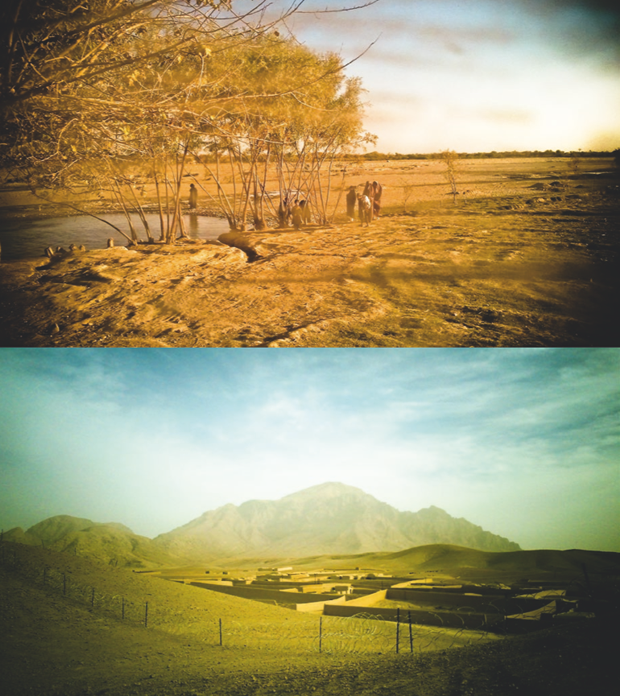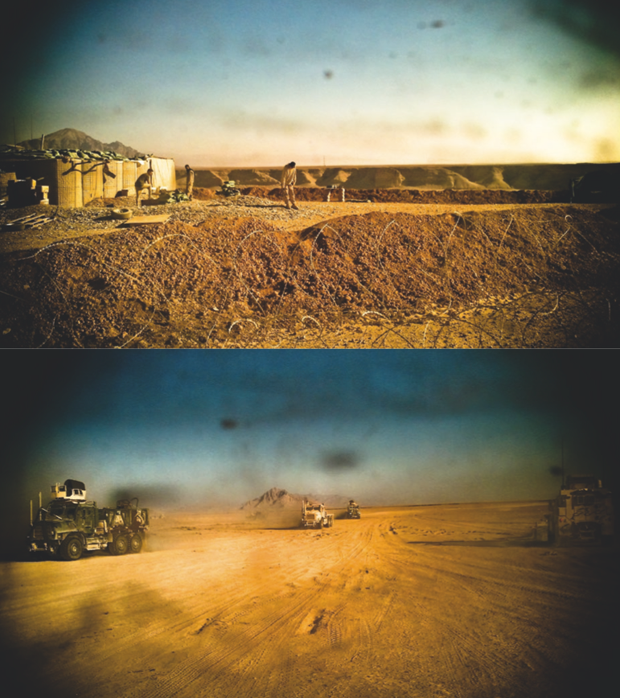Basetrack: Conversation with Teru Kuwayama
The following first appeared in Aperture magazine #214 Spring 2014. Become a subscriber today!

Balazs Gardi, Afghan detainee at Patrol Base Talibjan, Helmand Province, Afghanistan, November 7, 2010
In 2010, after many years of covering the war in Afghanistan, freelance photojournalist Teru Kuwayama received an invitation to embed with the First Battalion of the Eighth Marine Regiment in Helmand Province. Although it was only the start of the counterinsurgency campaign, it was the tenth year of a long and costly war that carried on at a far remove of the daily lives of Americans in the United States. Along with four other photographers, Balazs Gardi, Tivadar Domaniczky, Omar Mullick, and Rita Leistner, Kuwayama decided to approach the embed differently, and started Basetrack, a social-media reporting project conceived to connect Marines and their families and to target the social network—friends, family, and online presence—surrounding the battalion. Most of the pictures were taken with mobile phones or inexpensive consumer-grade cameras and distributed through Basetrack’s WordPress website, Flickr, and Facebook, the main Basetrack channel.
Last November, Kuwayama corresponded with Aperture about the experience of building Basetrack, the advantages of social media, and the misconceptions surrounding the early termination of their embed with the battalion.
—The Editors
Aperture: What was the nature of the partnership among contributing photographers?
Teru Kuwayama: It was a network operation. Photographers who had never worked in Afghanistan or who had never embedded with Marines were partnered up with the experienced operators. Two-person teams rotated in and out, to maintain a constant presence with the battalion.
The forward operators—the photographers on the ground—had extremely limited Internet access, so rear operators were tasked with maintaining the conversation online.
Aperture: Did you have any ideas, prior to the embed, of what you wanted to show or photograph?
TK: I avoid expectations or preconceived notions, but at the time we launched the project, counterinsurgency (or “COIN,” its military abbreviation) had been introduced as the new strategy in Afghanistan. One of the goals of Basetrack was to show the public what that counterinsurgency actually meant and looked like in practice. Ultimately it wasn’t about photography; it was about opening lines of communication. Photographs weren’t the product; they were the tactic.
Aperture: The project’s homepage featured a Google Maps interface. Why was a mapping component important?
TK: Basetrack was designed for a desktop user experience, focused on a mobile team traveling from outpost to outpost in southern Afghanistan. Map-based navigation was an intuitive approach. A core piece of the mission of the project was to tackle the abstraction of “over there” and to speak to the distance and the separation between the Marines and their families. Another piece was to provide some basic training in geography for those who might not have found Afghanistan on a map. Markers on the map were scrambled, so they reflected approximate but imprecise locations so as not to provide geolocation coordinates that could be used for targeting. The locations of the bases weren’t secret in any case.
Faces of vulnerable individuals, like Afghan interpreters working for the military, were blacked out. We did those redactions ourselves, at our own initiative, unlike a lot of major news organizations that don’t always demonstrate much concern for the fate of fixers and translators—but we also created custom software that allowed a designated military officer to black out any imagery or text that concerned them for any reason. The caveat was that the system also required them to articulate a justification for the redaction in a pop-up text window. Any redacted images or text were published, showing the blacked-out areas, making the redaction completely obvious. Unlike the hidden self-censorship typical in the mainstream media, we put the power and responsibility for withholding images or information squarely in the court of the military. Effectively, we facilitated unlimited censorship as long as it was done openly. In principle, it was very similar to the “transparent censorship” system that Twitter rolled out a year or two later.
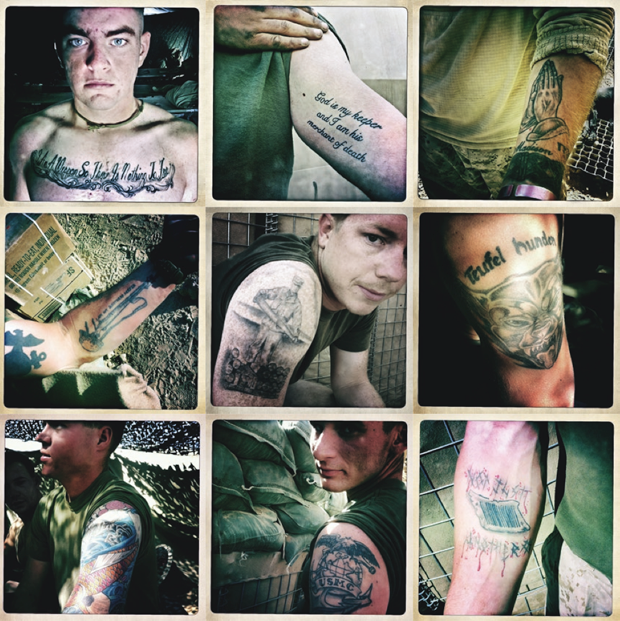
Tattooed U.S. Marines, First Battalion, Eighth Marine Regiment, Helmand Province, Afghanistan, 2010–11. First row: photographs by Balazs Gardi; second row: photographs by Teru Kuwayama; third row, from left to right: two photographs by Teru Kuwayama, last photograph by Monica Campbell.
Aperture: What were the images, or kinds of images, that engendered the most active conversations?
TK: Portraits of the Marines, but any kind of glimpse into the deployment triggered intense reactions. Our core audience was made up of family members who desperately wanted a glimpse of their Marines—any evidence that they were alive and well, any insight into the world they were living in.
Aperture: Was there any content that was controversial or produced a reaction that was unexpected?
TK: What was interesting was the banality of the controversies. For civilians, it can be hard to fathom that in some quarters of the military there’s a remarkable level of fastidiousness about seemingly trivial rules and regulations, down to the “authorized color” of socks or the length of sideburns or mustaches. The greatest scorn is reserved for “uniform Nazis,” referring to the kind of cultural bureaucracy where troops are punished for infractions such as not shaving properly, rolling their sleeves up, or not “blousing” their trousers according to regulation.
One Marine told me about being punished because a superior officer had found a photograph, posted on Facebook by his sister, where he appeared with minor infractions of the uniform standards. We found ourselves in a curious position when we sometimes had to withhold photographs that had no real “operational security” issues, effectively to protect Marines from their own officers. We approached this with the same transparency as we did with image and text redaction.
When families asked for photographs of their Marines and learned that some were being withheld for such seemingly absurd reasons, it generated a lot of debate on our Facebook page, and on some level, probably undermined the faith that family members might have had in the judgment of “command,” and along with it, the underlying logic of the “operational security” mantra that they were so familiar with.
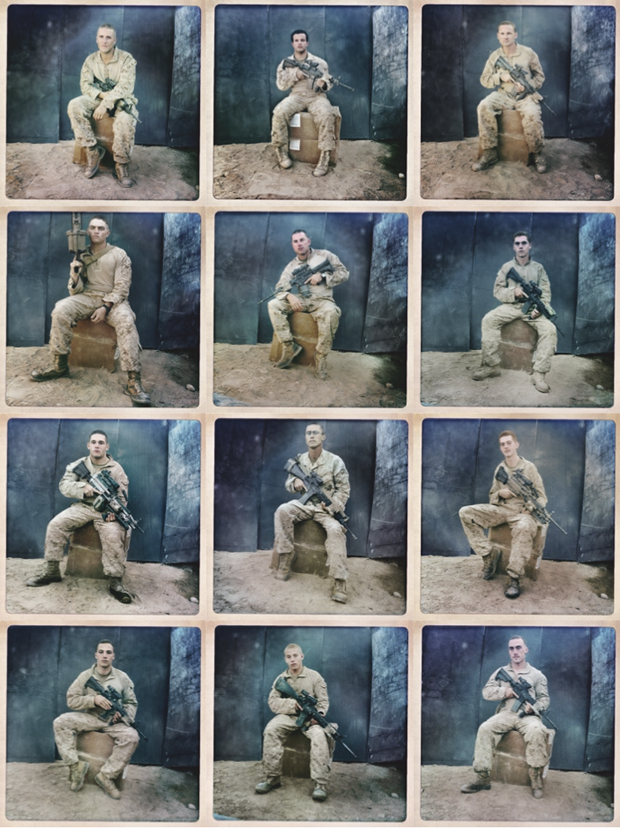
First row, from left to right: 1st Lt. Robert Rain, age 26, from Dallas, Texas; LCpl. Richard Giligen, age 19, from Bellefonte, Pennsylvania; Sgt. Derek Charles Schwartz, age 28, from Tyler, Texas. Second row: LCpl. Sam Coley, age 21, from Campobello, South Carolina; Sgt. Justin M. Schuh, age 29, from Milford, Ohio; LCpl. Christopher Crowley, age 19, from Henderson, Kentucky. Third row: LCpl. Justin Syvinski, age 19, from Middleton, Connecticut; Cpl. Tristan Rorie, age 28, from Charlotte, North Carolina; LCpl. Chad Hughes, age 19, from West Virginia. Fourth row: Corpsman Zack Penner, age 19, from Sacramento, California; LCpl. Joe Titus, age unknown, from East Windsor, Connecticut; Cpl. Jonathan D. Sappington, age 23, from Blue Mountain, Mississippi. All photographs by Balazs Gardi, Helmand Province, Afghanistan, October 30, 2010.
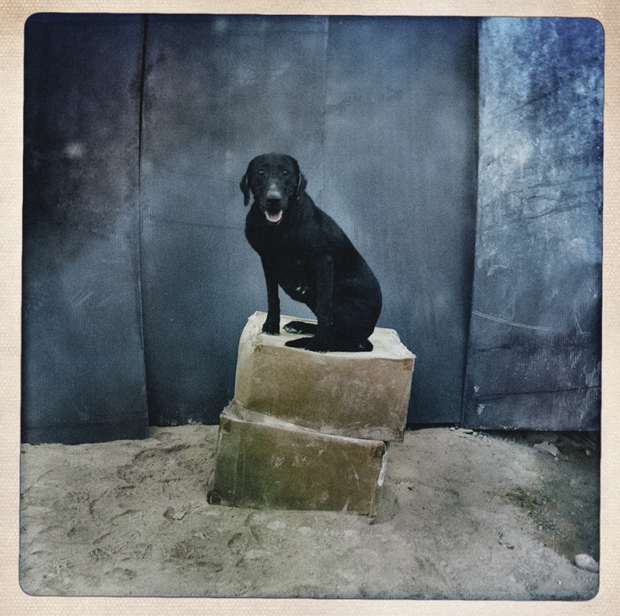
Balazs Gardi, Cpl. Gretchn, IED detector dog with First Battalion, Eighth Marine Regiment Bravo Company, First Platoon, Helmand Province, Afghanistan, October 30, 2010
Aperture: Why was the website shut down?
TK: It wasn’t shut down. The project was funded [by the Knight Foundation] to chronicle a seven-month deployment, and we kept the website running for more than two years. Like any complex website, it was built on the shifting ground of hosting platforms that are constantly being updated. We didn’t have experienced developers or the resources to maintain the patchwork of code indefinitely, so the site would periodically crash, and eventually we rebuilt it.
At one point, six months into the deployment, I received an email from U.S. Marine Corps (USMC) public affairs noting claims that the Google Maps interface posed an “operational security” risk to the battalion. There was never a request to shut down the website, though, or alter the maps in any way. When I suggested working together to mitigate security issues, there was no response. In face-to-face discussions with Marine officers, it became clear that the Basetrack.org website and Google Maps weren’t the real concern. It was the Basetrack Facebook page—and the unfiltered conversations between family members—that were rattling some nerves. I was given an ultimatum to shut down the Facebook page or have the plug pulled on the embed—but no one was willing or able to articulate a rationale for doing so. The page stayed live, and the last team of embeds had their travel orders canceled. As I predicted to the battalion commanders, turning off the embeds didn’t turn off the community or the conversation. It had quite the opposite effect. There was an explosion of debate within the military community about the ejection of the embeds and a huge spike in media attention to the project.
Aperture: Was the platform used in the way you had originally intended? If not, how did Marines and family members use the site differently than you expected?
TK: The project dovetailed with a stated change in the U.S. Marine Corps that allowed deployed Marines to use social media platforms like Facebook and Twitter, but as it turned out, the Marines had very limited Internet access and weren’t encouraged to express themselves online by their commanding officers. The conversation wasn’t driven by twenty-year-old Marines in Afghanistan; it was driven by their wives and mothers in the United States.
Aperture: If you were to do it over, what would you do differently?
TK: To [paraphrase] Donald Rumsfeld: “You go to war with the Army you have. They’re not the Army you might want or wish to have at a later time.” It would have been nice to have more funding, more time, and more experienced coders, but as the Marines say, “Improvise, adapt, overcome.” We maneuvered pretty well out there.
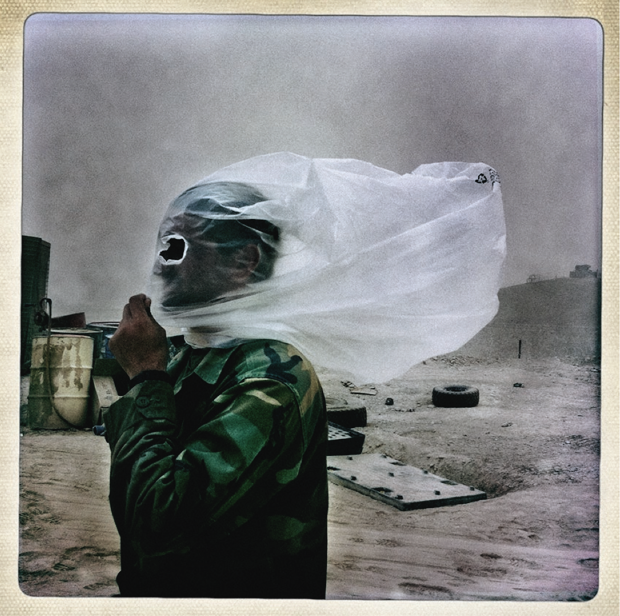
Balazs Gardi, Afghan National Army soldier shelters his face with a plastic bag against a dust storm at Combat Outpost 7171, Helmand Province, Afghanistan, October 28, 2010
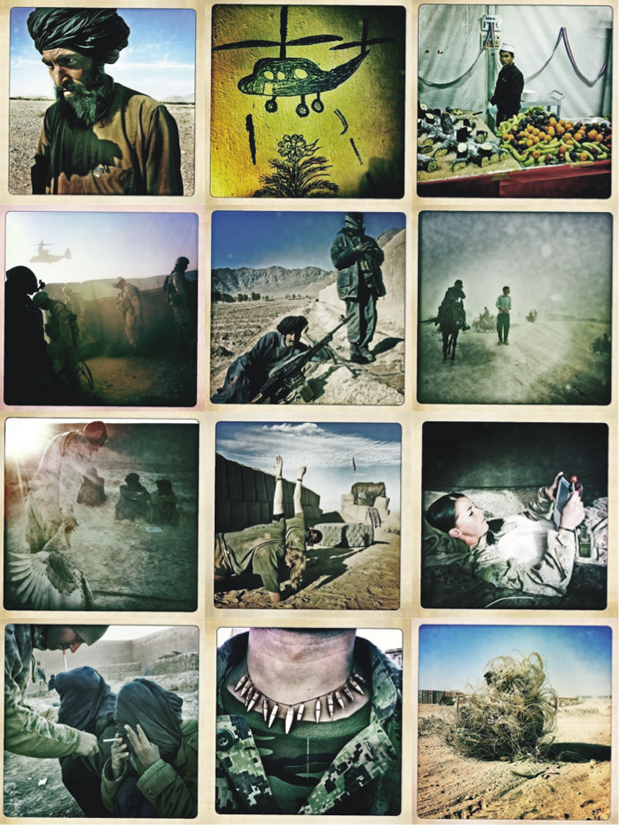
All photographs of U.S. Marine First Battalion, Eighth Marine Regiment, Helmand Province, Afghanistan, 2010–11. Photographers, from left to right, first row: Balazs Gardi, Teru Kuwayama, Teru Kuwayama; second row: Teru Kuwayama, Teru Kuwayama, Omar Mullick; third row: Teru Kuwayama, Rita Leistner, Rita Leistner; fourth row: Teru Kuwayama, Balazs Gardi, Monica Campbell. All photographs © and courtesy the photographers.










